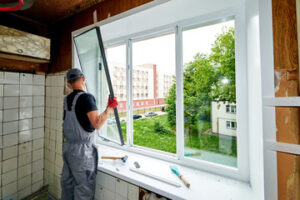Roofing is the top covering of a building that protects against rain, snow, sunlight and extremes of temperature. It can be constructed in a variety of shapes and forms.

Roofs can be a hazardous environment to work on and many countries have specific safety regulations for working on roofs. These include training requirements, personal fall arrest systems and a hierarchy of controls for hazards.
Roofing plywood is the foundation that holds up the rest of your roof’s finish material, such as shingles or tiles. It also helps support the weight of the roof structure and withstand weather elements. For this reason, it’s important to use the right kind of roofing plywood for your project. Plywood can be used for a variety of projects, including home construction and furniture building. It is a durable wood product that can withstand a lot of moisture, and it’s available in many thicknesses. For roofing, you should look for exterior-grade plywood that is treated with waterproof glue.
Compared to OSB, plywood offers superior strength and durability for roofing sheathing. Its layering design creates a system of checks and balances to help prevent warping or shrinking. Plywood also has better insulating properties, helping to keep your house warmer in the winter and cooler in the summer. Plywood is also relatively affordable and can be cut, tailored, and shaped to fit your particular roofing design.
Plywood is made by gluing together thin sheets of different types of wood. It can be found in a range of thicknesses, from 3/8 inch to 3/4 inch. The specific thickness needed will depend on the weight of your roof, as well as the distance between the rafters. In general, roofing plywood is a good choice for roofs with low slopes.
The main drawback of plywood is its sensitivity to moisture. If exposed to prolonged moisture, it can rot or warp, which could compromise the structural integrity of your home. It’s important to choose plywood that is rated for outdoor use and properly sealed and waterproofed before installation.
Oriented strand board (OSB) is another type of engineered wood panel that has gained popularity in recent years. It is similar to plywood in that it’s an engineered wood product, but its manufacturing process is more eco-friendly. It uses strands of wood from fast-growing trees, which reduces the amount of raw materials needed for production. However, it’s not as strong or durable as plywood, and it may require more maintenance to keep it looking new.
Metal
Metal roofing is a popular choice for commercial buildings because it provides protection, energy efficiency, and design flexibility. It’s also an eco-friendly option, and it can last 50 years or more. Metal roofs are available in many different styles and colors, and they can be customized to fit a specific architectural vision or function.
While a metal roof may look more at home on a barn or industrial building, it’s becoming increasingly popular for residential applications as well. There are many types of residential metal roof panels, and they can be used to mimic the look of traditional shingle or clay tile. There are even styles that can be curved to follow the curve of a house’s gables or hips.
There are two common types of residential metal roofing: exposed fastener and standing seam. Exposed fastener metal roofing consists of overlapping panels that are fastened directly to the roof deck or framing. The fastener heads are visible, but they can be painted to make them less obvious. Standing seam metal roofing, on the other hand, consists of panels interlocked together to form a seam that stands vertically. The clips and fasteners that hold the panels in place are concealed, making this type of metal roofing more durable and attractive.
When selecting a metal roof, it’s important to consider the climate and weather conditions where you live. In colder climates, a galvanized steel or aluminum roof will be more durable than a painted or coated metal roof. Galvanized steel is also more rust resistant than other metals.
Another consideration is how much a metal roof will cost. On average, a metal roof will cost two to three times more than a standard shingle roof. However, metal roofs are long-lasting and can add resale value to your home. They also provide a high level of energy efficiency, cutting cooling costs by 10-25%. Plus, they aren’t any noisier than a shingle roof when it rains. If you’re considering a metal roof for your home, be sure to get a quote from several companies and compare prices before choosing a contractor.
Asphalt
Asphalt shingles are a popular roofing option that come in many different styles and colors to match the aesthetic of any home. They are also very affordable and can be paid for in a matter of years. Additionally, they are highly durable and resistant to harsh weather conditions such as rain, wind, and fire. In addition, they are easy to install.
The shingle itself is made from a fiberglass mat that’s coated with an asphalt-coated material. The mat is created by winding glass fibers of a particular length and diameter together with stable resins and binders. It’s then wound into large rolls before it is unwound during the shingle manufacturing process.
Once the shingle is produced, it’s covered with an asphalt coating that protects it from abrasion and UV rays. It’s then embedded with granules which help the shingle resist water penetration, control algae growth and add an attractive color and texture to the roof.
In addition, a reflective surface is added to the asphalt shingle. This helps reduce energy costs by reflecting the sun’s rays and keeping the roof cooler. The granules also help protect the roof from mold and mildew.
While the asphalt used in a roof shingle is slightly different from the asphalt used in road paving, it’s processed to a higher degree of toughness to withstand the elements and protect the house for years. The shingles are often coated with other materials as well such as ceramic granules that provide additional strength and protection.
The most common shingle is the three-tab, which has a single layer of cutouts forming three tabs on each shingle. The architectural or laminated shingle, on the other hand, has multiple layers of shingles bonded together to create a more varied and contoured appearance to a roof. The laminated shingle is also thicker than the strip shingle and can withstand more severe weather conditions.
The hip and ridge lines of the roof can be covered with standard three-tab shingles, but manufacturers also make specialized shingle types for these areas. They’re often referred to as starter shingles because they’re installed first to prevent water from leaking under the other shingles. These shingles are usually lighter in color to blend in with the surrounding shingles.
Flat roofing
The clean lines of flat roofs add to a building’s aesthetic, complementing modern and minimalistic design. They are also easier to construct than traditional pitched roofs, reducing the materials and installation costs. They can also offer significant energy savings through the use of reflective materials to reduce heat absorption and lower cooling costs. The ample space on a flat roof allows for the placement of mechanical equipment and other features such as solar panels or rooftop gardens, further boosting the energy efficiency of the building.
Although they may look flat to the untrained eye, flat roofs are not truly flat – they have a slight incline known as a “pitch” (between 1/4 of an inch and 1/2 of an inch per foot). This pitch is necessary to manage water runoff and prevent water pooling.
When properly designed and maintained, flat roofs can last for decades. However, they are susceptible to many of the same issues as other roofing types such as leaks and weather damage. This is primarily due to poor installation and lack of regular maintenance. To avoid these problems, you should consult with a licensed professional and have your flat roof regularly inspected to spot and repair issues as they arise.
The most common cause of flat roof failure is improper drainage, which can lead to water ponding and rot. This is typically caused by debris such as gravel, leaves or other material blocking the roof’s drain holes. To avoid this, you should sweep and collect any debris regularly, as well as inspect the roof’s drainage system after heavy rains or snowstorms.
Another issue with flat roofs is their lack of insulation, which can lead to condensation and damage to the underlying structure. To prevent this, you should install an insulated flat roof or consider adding a reflective coating to the top surface.
Despite their drawbacks, flat roofs can be a good option for commercial buildings. They are also suitable for apartment complexes, retail centers and schools. They can even be used to create a parking area, provided the structure is strong enough to support the weight of vehicles.




